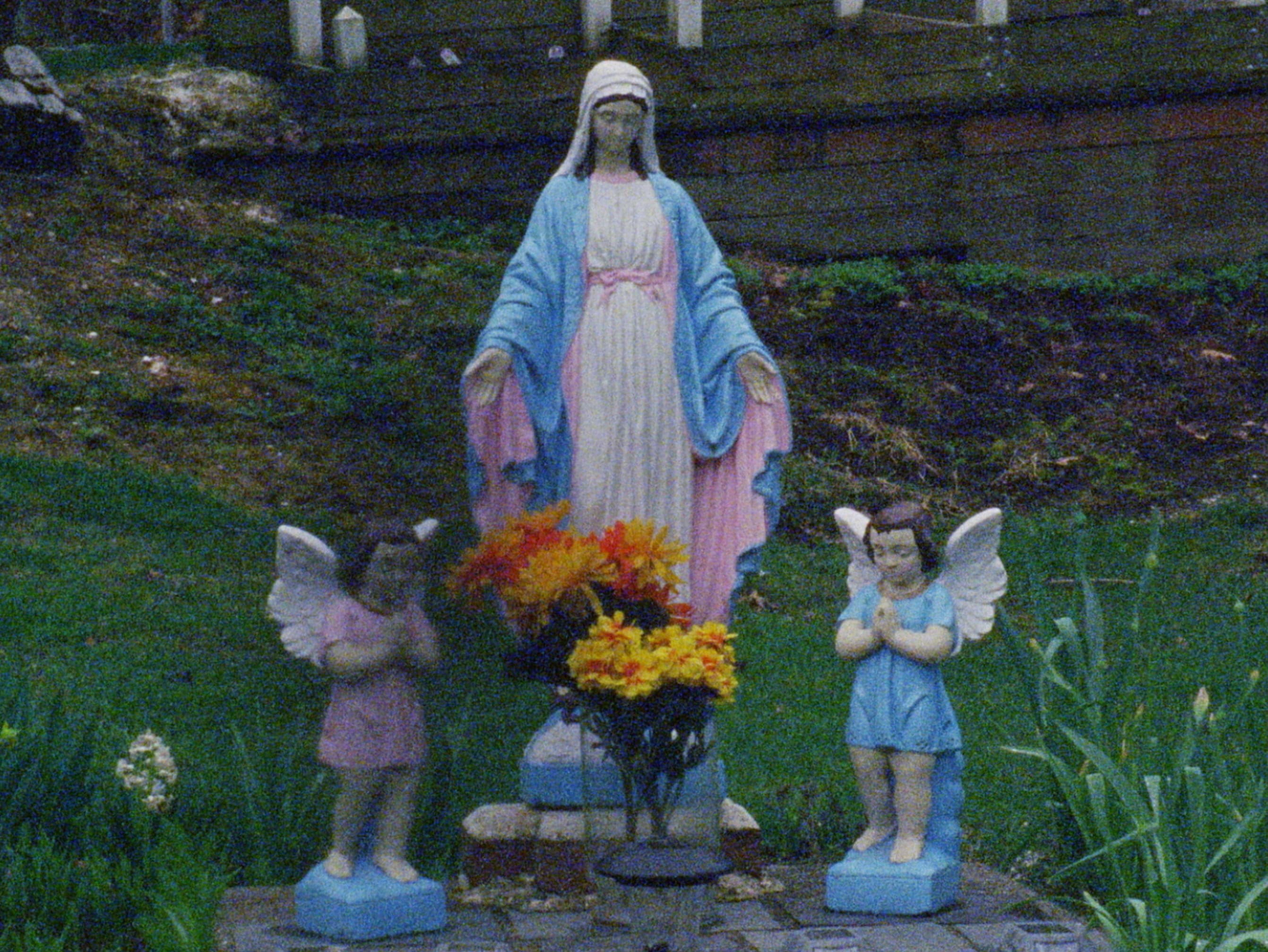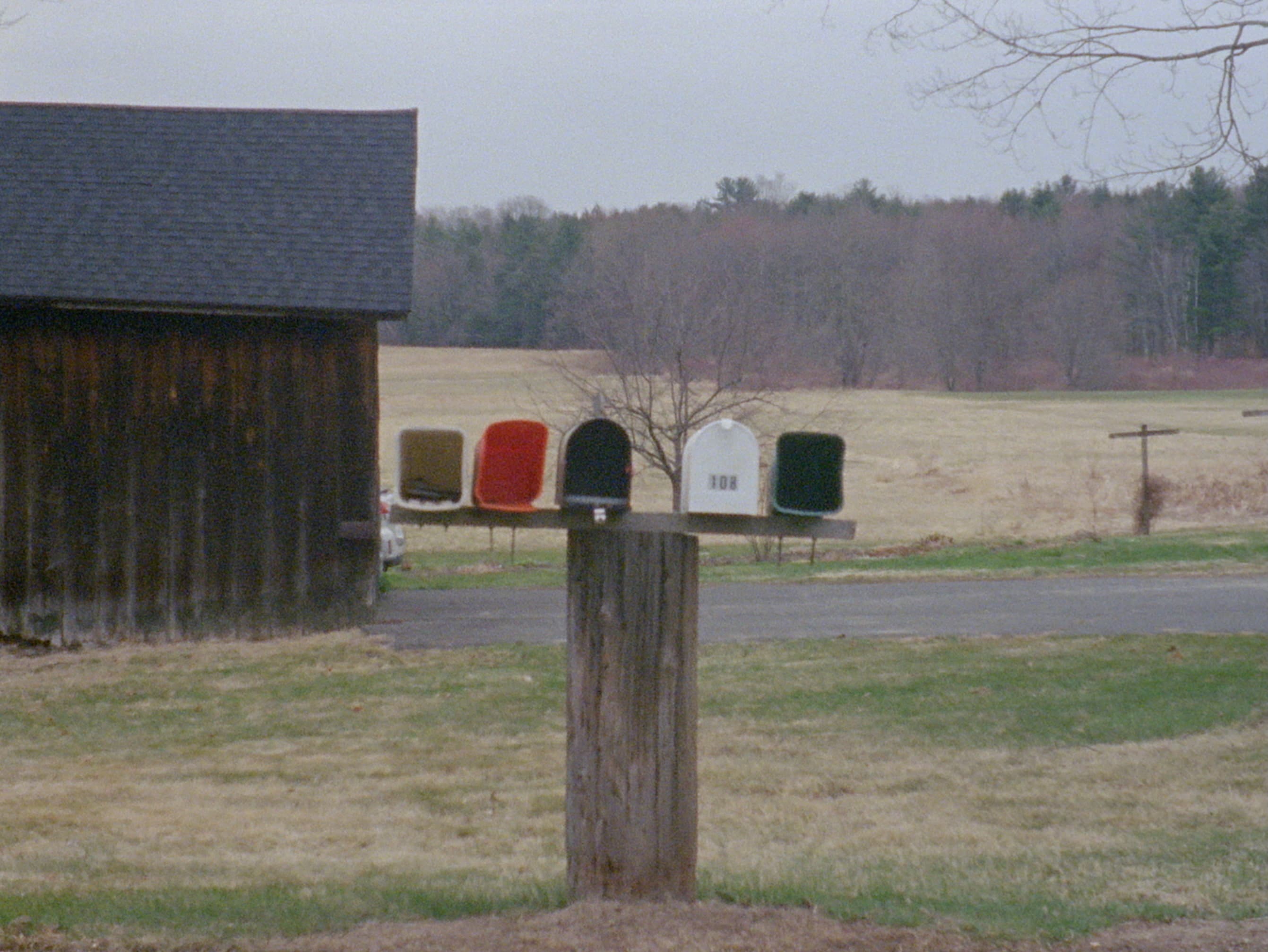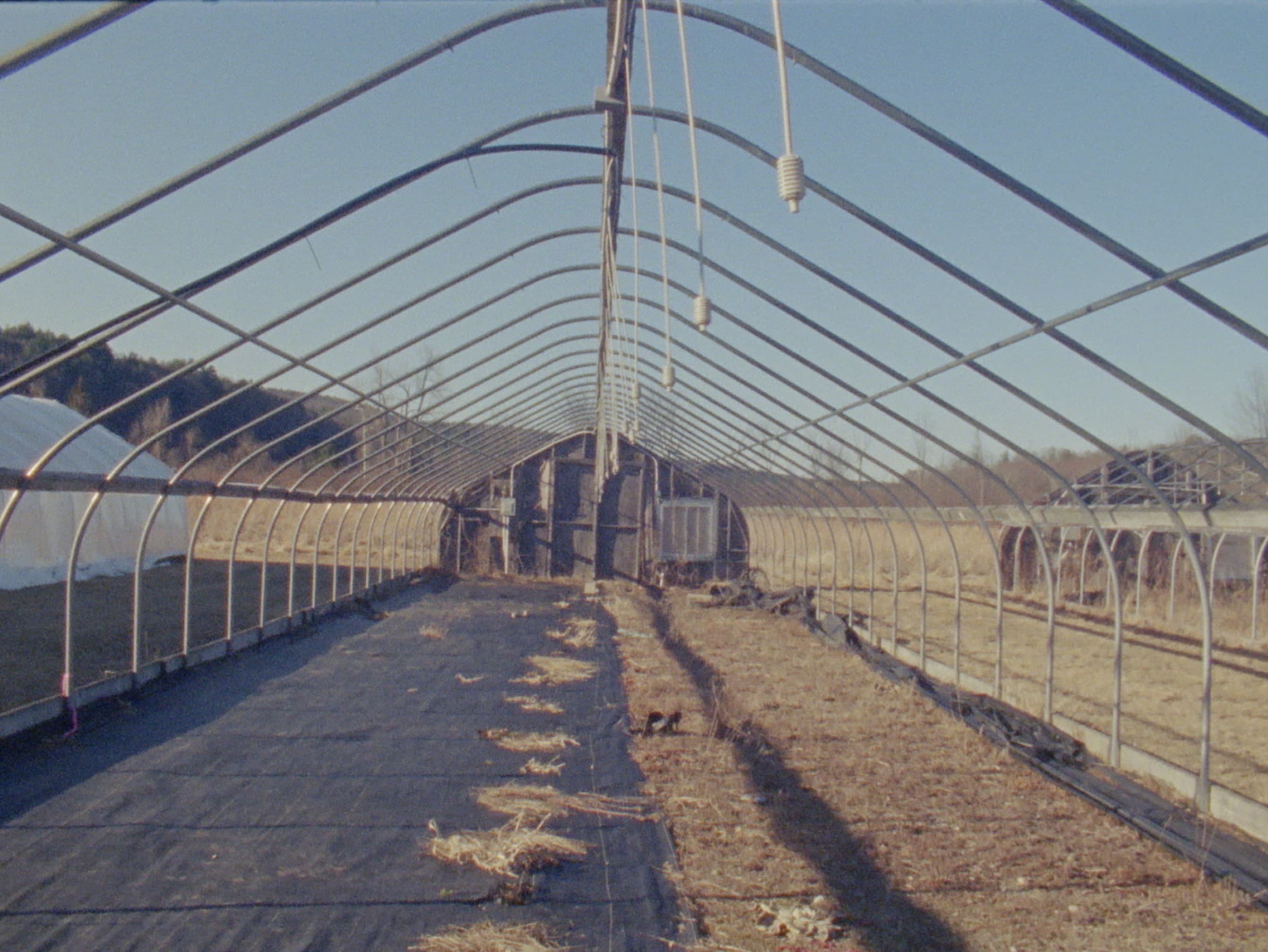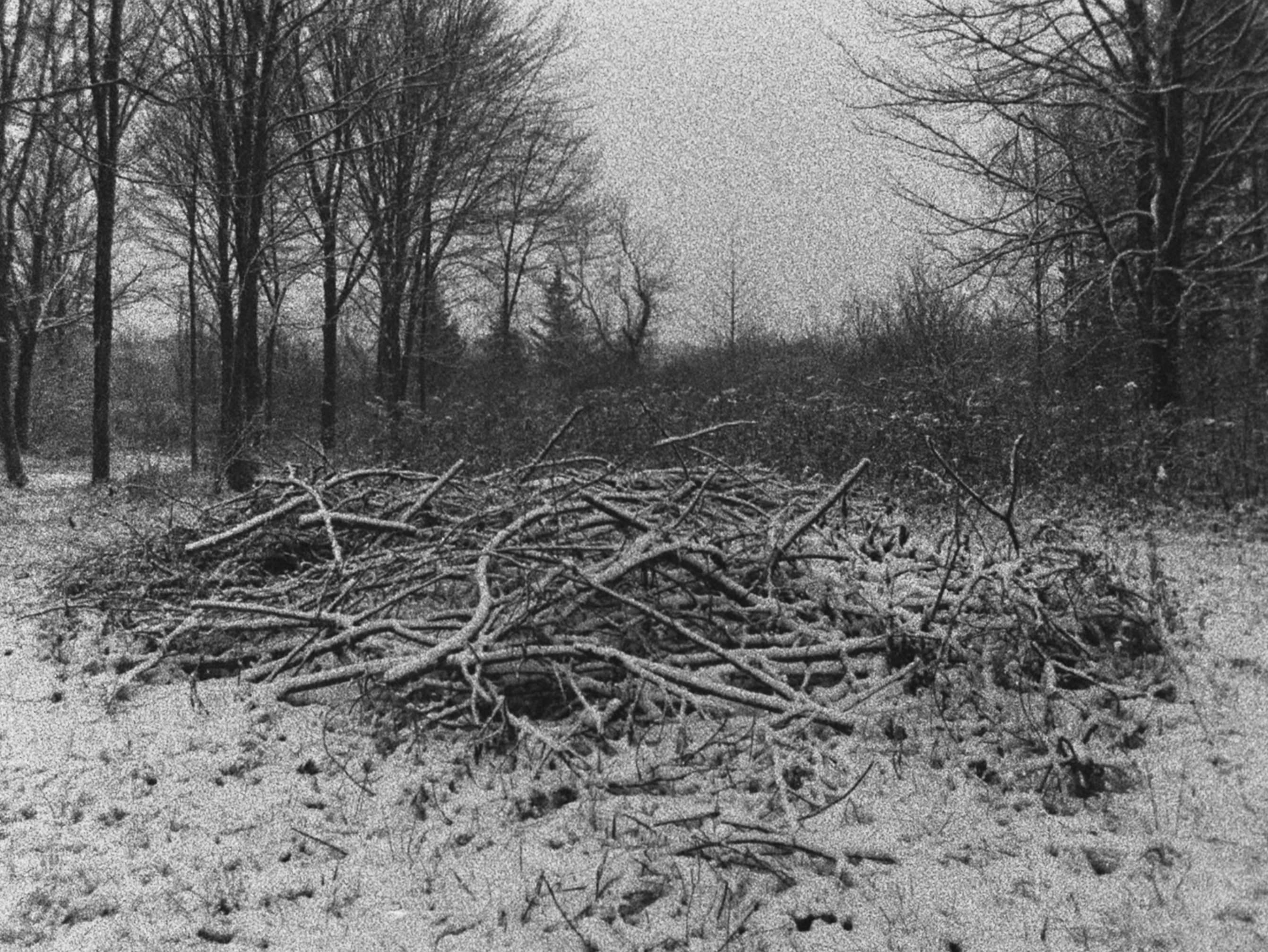Willie and Brewsie
2018
Film
Feminism, Nationalism












Director: Cynthia Madansky
Music: Zeena Parkins
16 mm ◊ 12 min.
“It used to be fine before the war.” — Gertrude Stein
Set in the immediate aftermath of the Second World War, Stein’s little-read final novella "Brewsie and Willie" (1946) is structured as exchanges between young American soldiers who are attempting to reintegrate into a country that is at once familiar and changed.
Shot in the Northeastern United States during the exceptionally picturesque months of autumn—with trees awash in browns, reds, and yellows—Willie and Brewsie embodies a complicated relationship with beauty and explores the interwoven concepts of America, Americana, and Americanness by way of their symbols. These include the accoutrements and accents of the landscapes themselves, which range from the manmade (truck stops, signposts), to the natural (dears, pumpkins). The latter is not the only element that reminds viewers of that most American of holidays, Thanksgiving, on the surface a celebration of comraderies that covers for a history of violence and settler-colonialism.
The film recalls the landscapes of Minot, ND (2008)—whose vistas contain no small sense of threat due to the adjacent nuclear missiles buried next to the town—it also recalls the filmmaker’s current work entitled Index:Trace that looks at the impact of nuclear colonialism, through a reading of the communities and landscapes contaminated by the entire nuclear complex — uranium, fuel production, nuclear weapons, nuclear power and nuclear waste — across all 50 states.
Beyond their echoes at the level of identity (Queer, Jewish, Women), both Stein and Madansky are native Americans but whose lives are or were lived largely abroad, embedding their lens on America with a particularly distanced nuance. As with many of Madansky’s other projects, she’s here both insider and outsider, and this tension produces a film of tremendous beauty and unease.
Part of the Feminist Writers Series, an ongoing suite of films, inspired by the words of radical international feminists. Ranging from canonized to little-known figures, and unbeholden by genre, the films cite and respond to works of poetry, novels, theatre, theory, political writing, and other nonfiction.